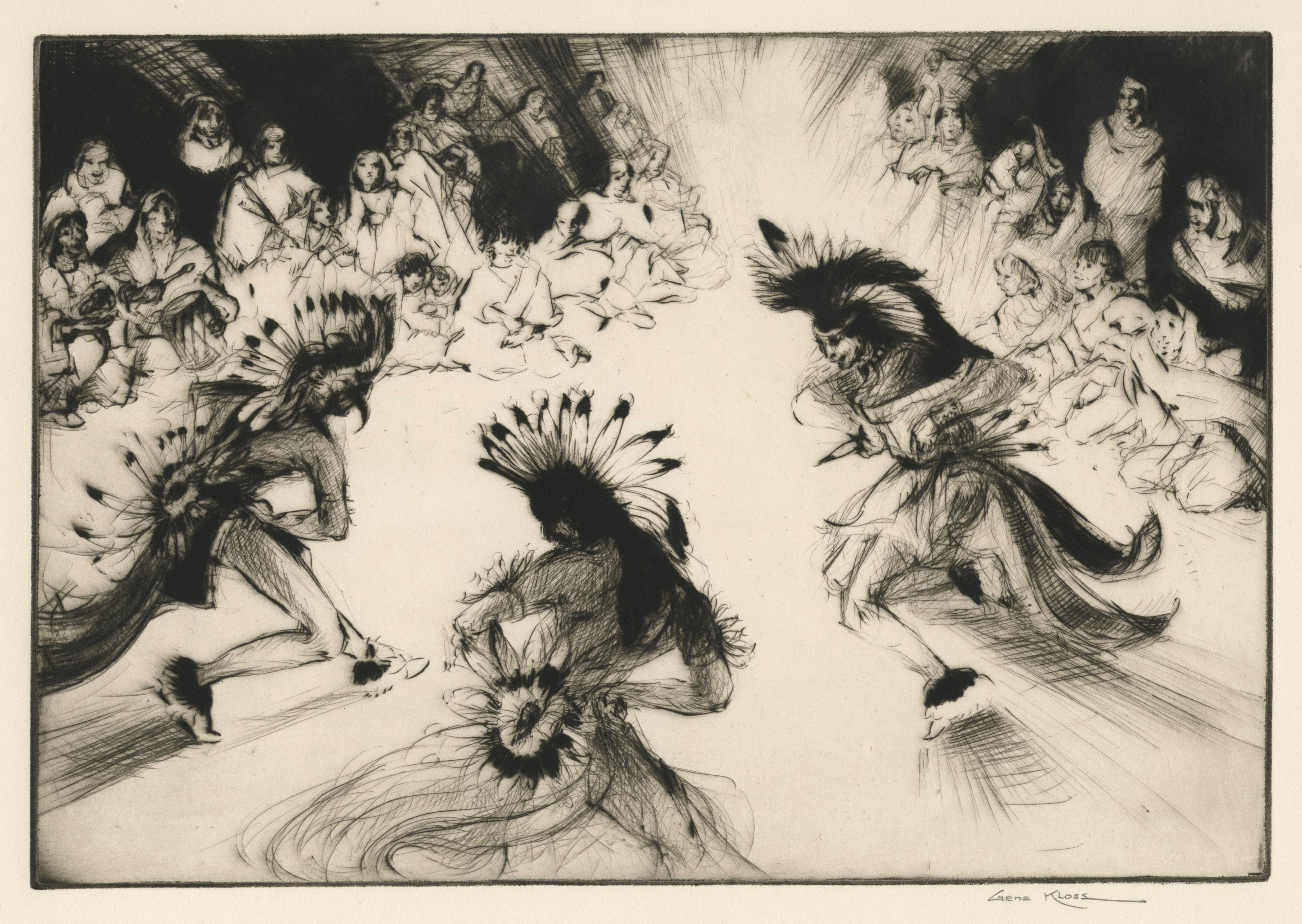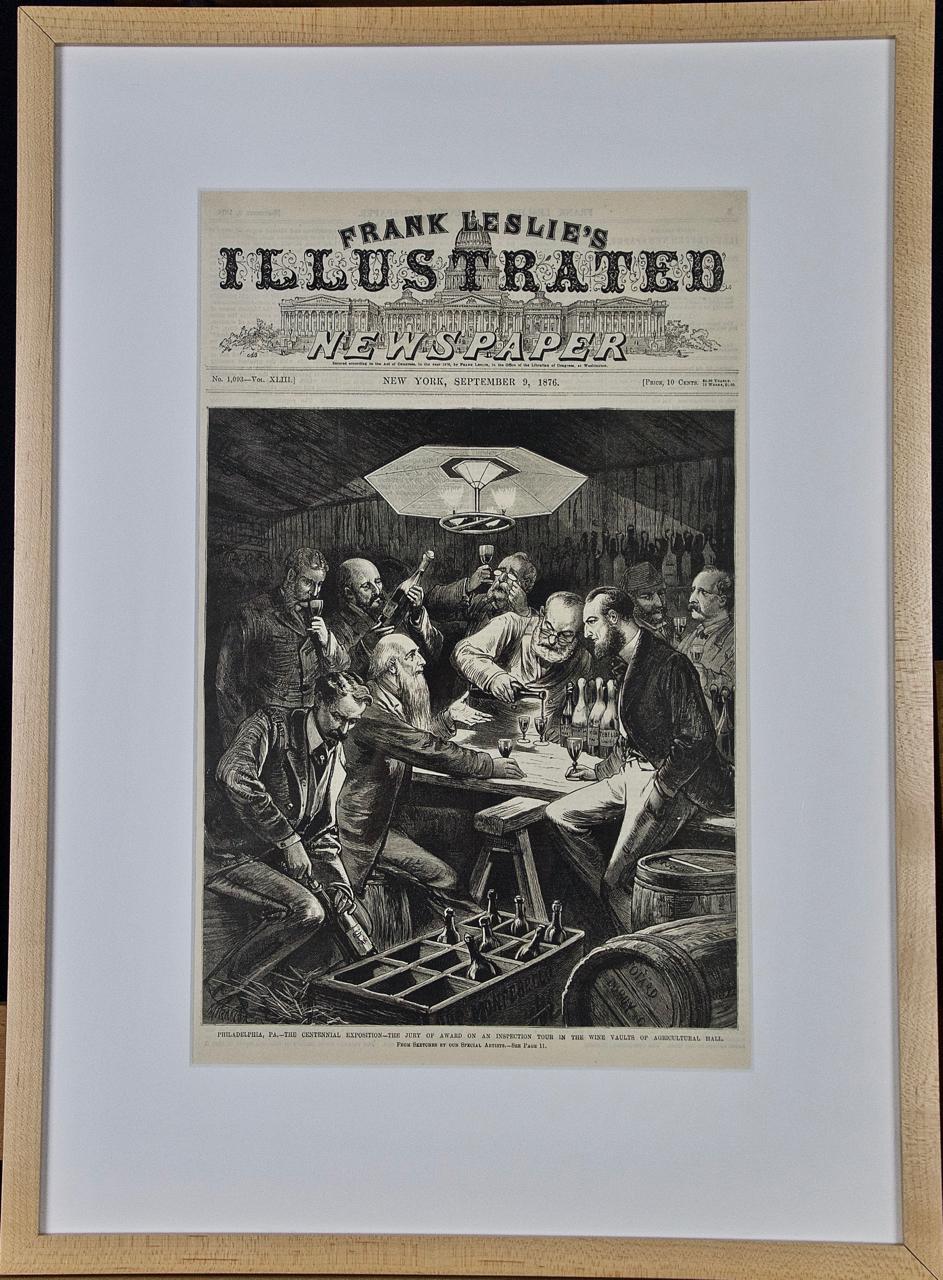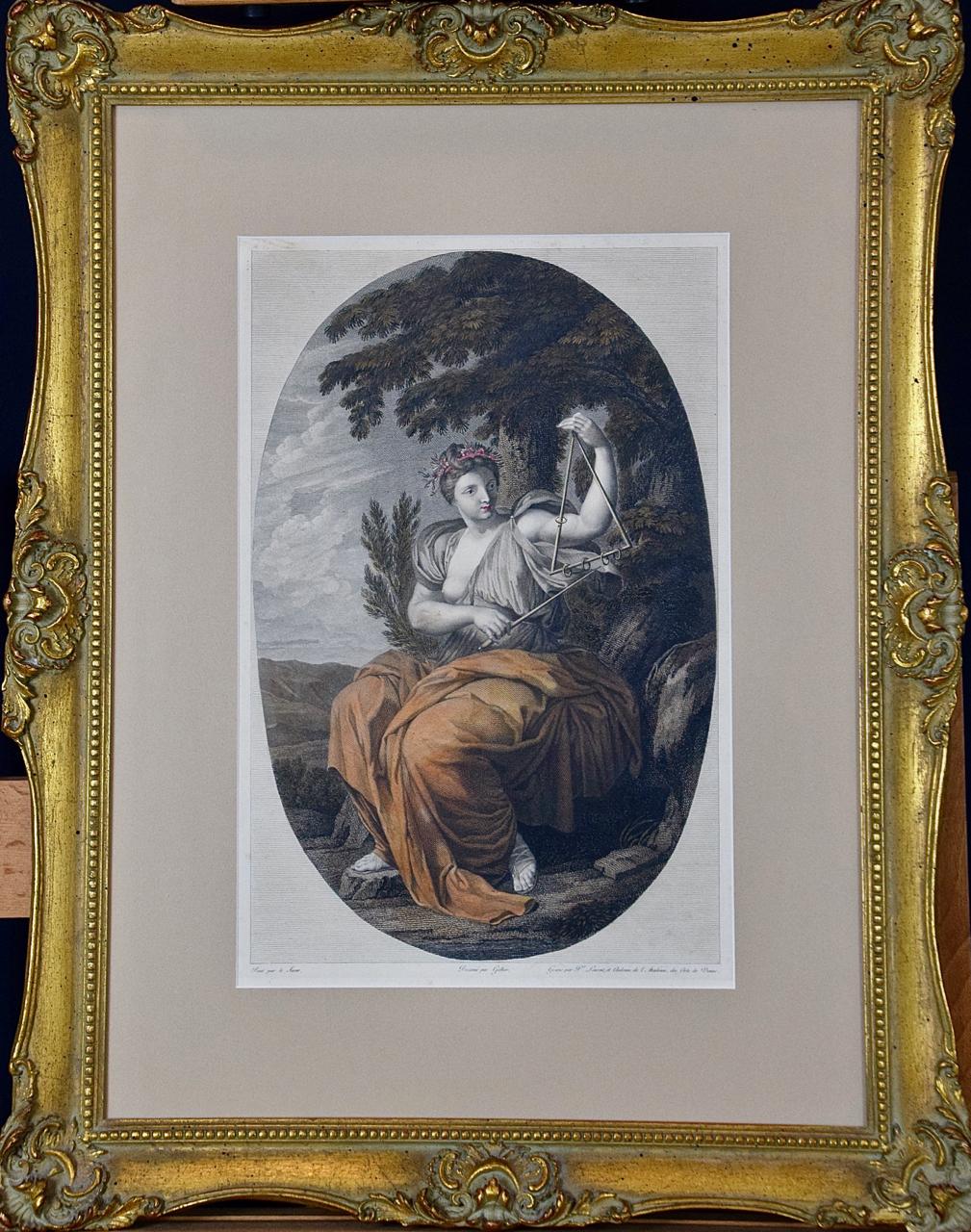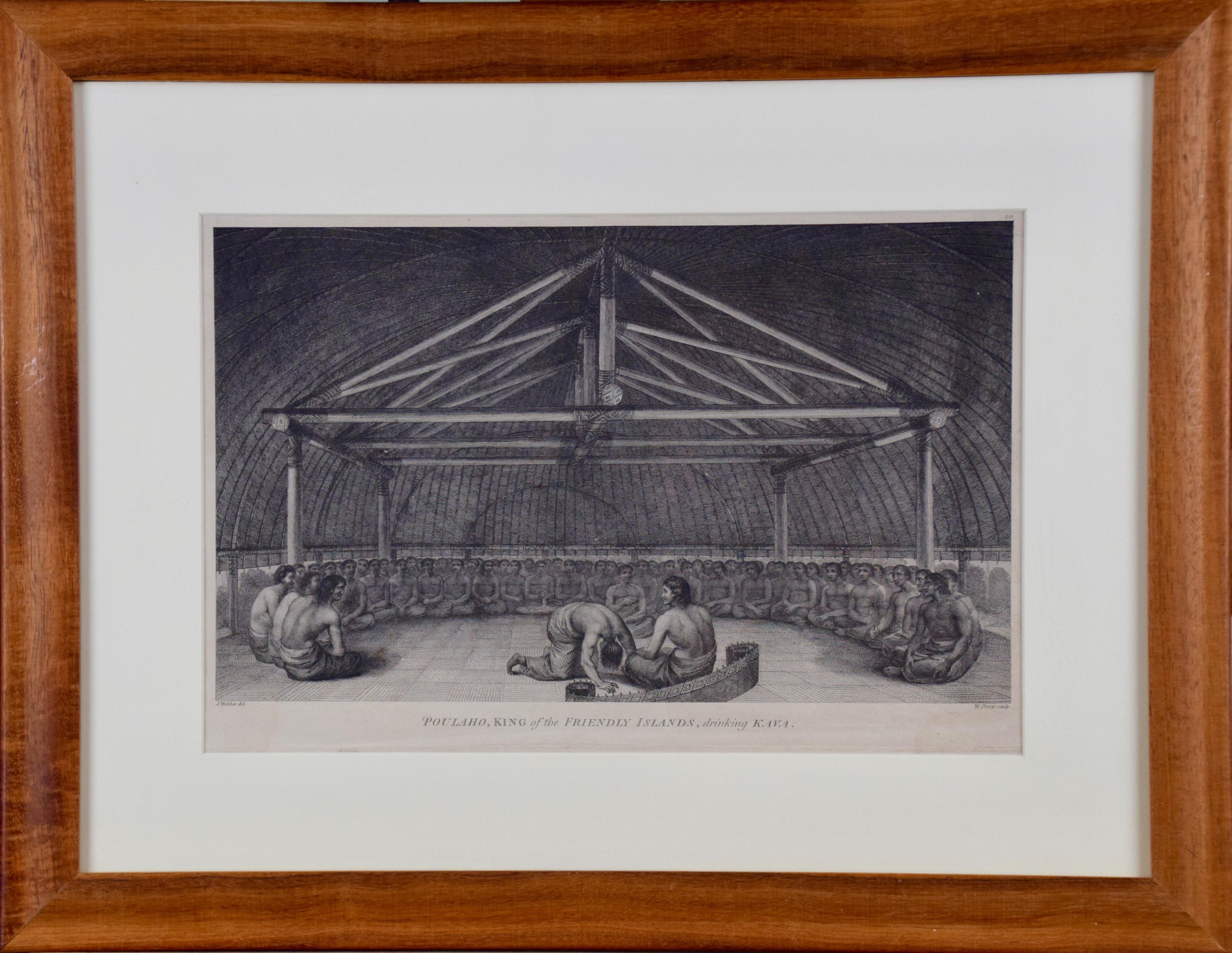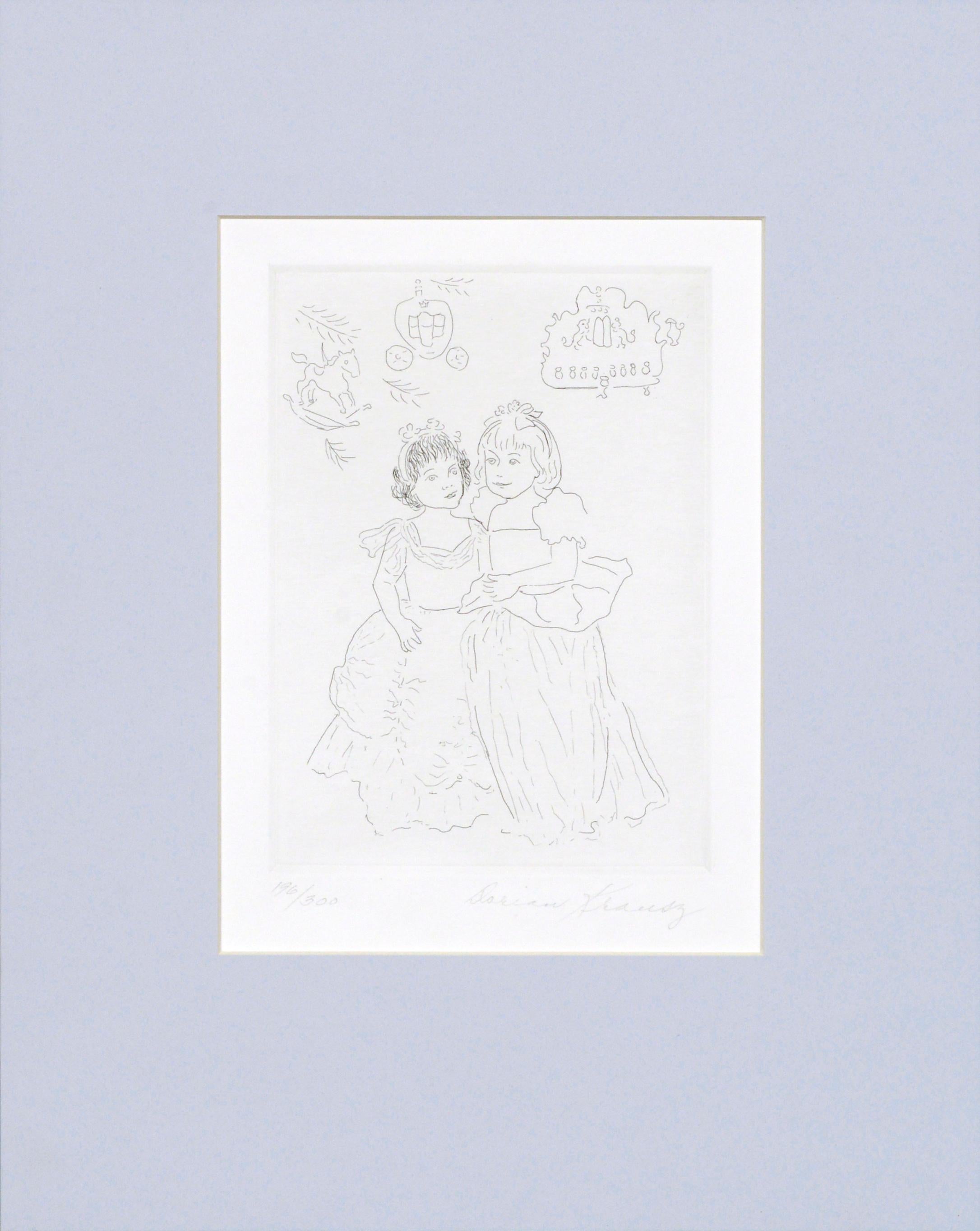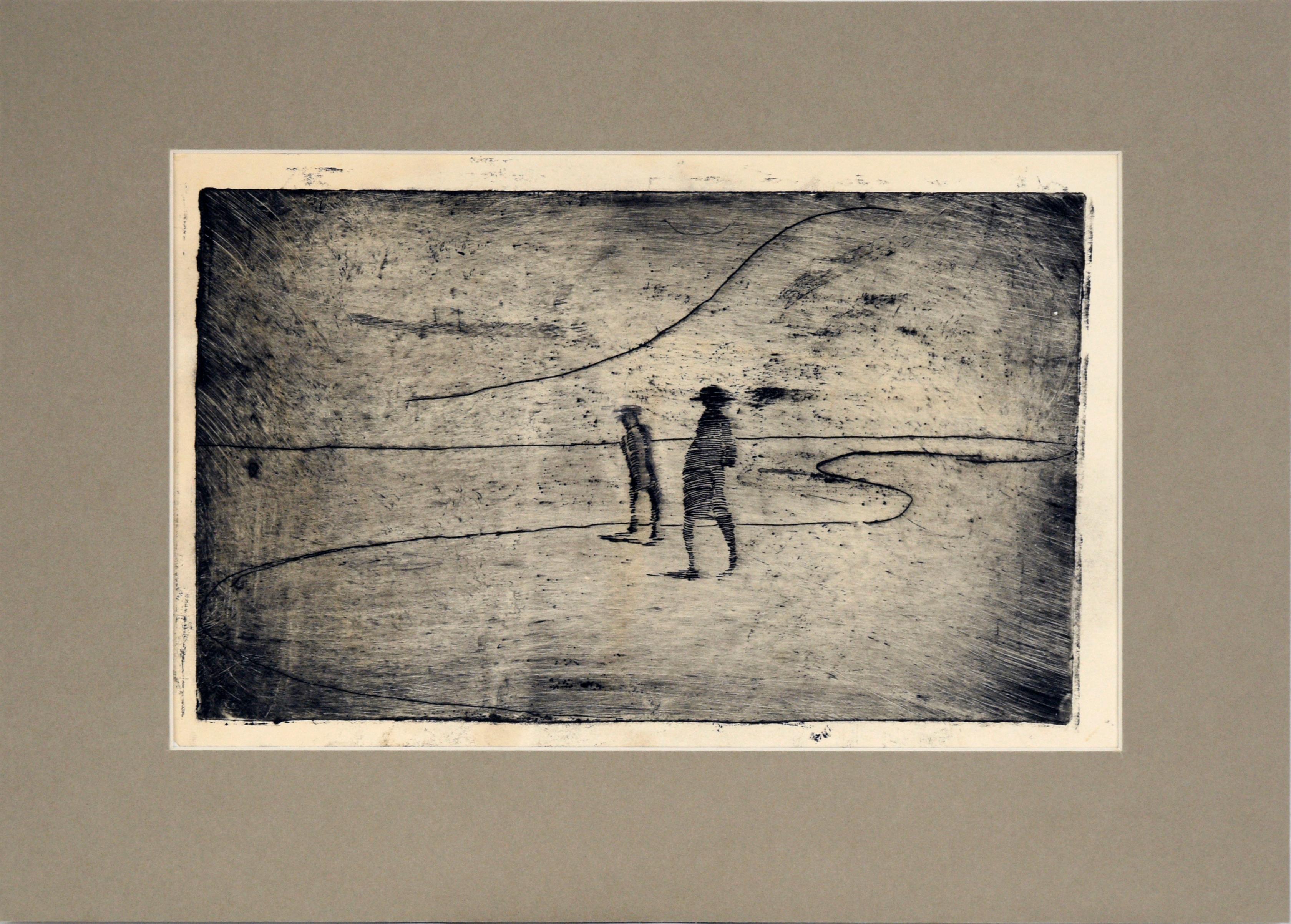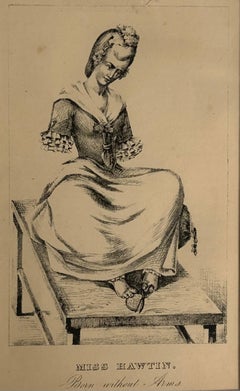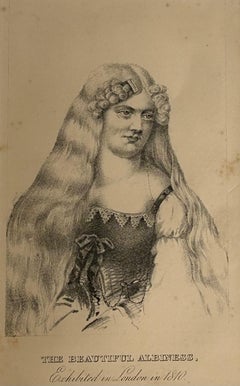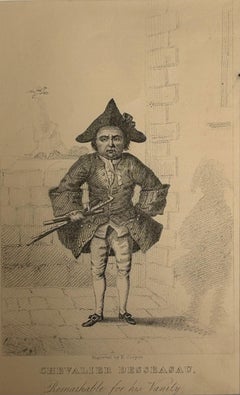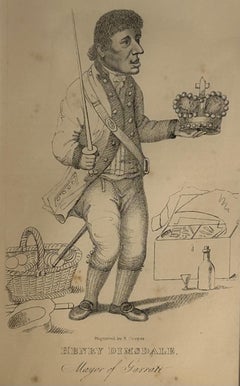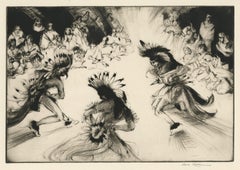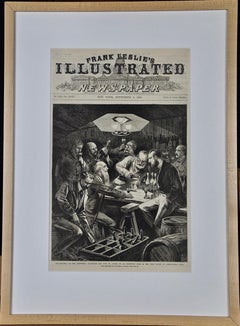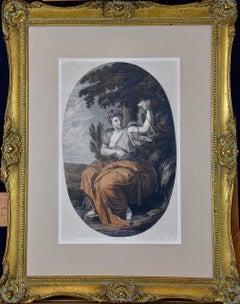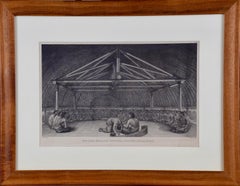Items Similar to Industry and Idleness Plate 3: The Idle 'Prentice at Play In The Church Yard
Want more images or videos?
Request additional images or videos from the seller
1 of 3
Industry and Idleness Plate 3: The Idle 'Prentice at Play In The Church Yard1830
1830
About the Item
William Hogarth was an English painter and engraver, the outstanding British artist of his period. During his childhood, his father, a schoolteacher, was imprisoned for debt, and this early experience of the seamy side of life left a deep mark on Hogarth (much of his output is concerned with the contrast between success and failure, and he depicted prisons in several works). He trained as an engraver of silver plate and by 1720 had set up his own business in London, doing various kinds of commercial work. In his spare time he studied painting, first at the St Martin's Lane Academy and later under Sir James Thornhill, whose daughter he married in 1729. By the early 1730s he had achieved some success as a painter of conversation pieces and at about the same time he invented the idea of using a sequence of anecdotal pictures ‘similar to representations on the stage’ to point a moral and satirize social abuses.
A set of 12 original engravings illustrating Industry and Idleness, after the drawings by William Hogarth, printed in 1833. The engravers are F Jordan, E Smith, C Armstrong, S Davenport, H Adlard, W H Worthington, H Fernell, A Duncan and F F Walker. The engravings, which are in excellent condition, would be mounted (matted) and ready to frame
Edward Smith (fl. 1823-49)
The landscape, figure, and portrait engraver Edward Smith may have been a native of Edinburgh but appears to have worked mostly in London. His earliest recorded plates are for Effigies Poeticae in 1823. He went on to contribute to Hogarth Moralized (1831), Hogarth's Works (1833)
Read moreText source: The Oxford Dictionary of Art and Artists (Oxford University Press)
Engraved from the original by Wm Hogarth
Minor foxing
About the Seller
5.0
Gold Seller
Premium sellers maintaining a 4.3+ rating and 24-hour response times
Established in 2021
1stDibs seller since 2021
33 sales on 1stDibs
- ShippingRetrieving quote...Shipping from: Bournemouth, United Kingdom
- Return Policy
Authenticity Guarantee
In the unlikely event there’s an issue with an item’s authenticity, contact us within 1 year for a full refund. DetailsMoney-Back Guarantee
If your item is not as described, is damaged in transit, or does not arrive, contact us within 7 days for a full refund. Details24-Hour Cancellation
You have a 24-hour grace period in which to reconsider your purchase, with no questions asked.Vetted Professional Sellers
Our world-class sellers must adhere to strict standards for service and quality, maintaining the integrity of our listings.Price-Match Guarantee
If you find that a seller listed the same item for a lower price elsewhere, we’ll match it.Trusted Global Delivery
Our best-in-class carrier network provides specialized shipping options worldwide, including custom delivery.More From This Seller
View AllMiss Hawtin - Born without Arms
Located in Bournemouth, Dorset
Miss Hawtin, born without arms, 18th century. Born in Coventry, she exhibited her dexterity cutting decorative watch papers with her feet all over England...
Category
19th Century Realist Figurative Prints
Materials
Engraving
The Beautiful Albiness - Exhibited in London in 1810
Located in Bournemouth, Dorset
Miss Harvey, the Beautiful Albiness, Regency era. 1869 (lithograph).
Miss Harvey, the Beautiful Albiness, Regency era. 1869 (lithograph) by Cooper, Robert (fl.1800-36); Private Coll...
Category
19th Century Figurative Prints
Materials
Engraving
Chevalier Desseasau - Remarkable for his vanity
Located in Bournemouth, Dorset
Chevalier Desseasau, remarkable for his vanity, died 1775. Vain Prussian dwarf who was a celebrity London's coffee houses such as Old Anderton's and the Barn, and later Fleet Debtor...
Category
19th Century Figurative Prints
Materials
Engraving
Henry Dimsdale - Mayor of Garratt
Located in Bournemouth, Dorset
Henry Dimsdale, Mayor of Garratt, 1821. Creator: Robert Cooper
Henry Dimsdale, Mayor of Garratt, 1821. Portrait of Sir Harry Dimsdale, a London muffin seller who was " mayor" in the...
Category
19th Century Figurative Prints
Materials
Engraving
Thomas Wood - The Abstemious Miller
Located in Bournemouth, Dorset
Thomas Wood, The Abstemious Miller, 1821. Portrait of miller Thomas Wood (1719-1783), made c1773 when he was 53 years old. Wood, of Billericay in Essex, became known for his weight-l...
Category
19th Century Figurative Prints
Materials
Engraving
Jenny Darney - A Remarkable Character in Cumberland
Located in Bournemouth, Dorset
Jenny Darney, A Remarkable Character in Cumberland', 1821. Portrait of a pipe-smoking 'travelling eccentric' who was 'well known in the southern part of the county of Cumberland...Th...
Category
19th Century Figurative Prints
Materials
Engraving
You May Also Like
Indian Friendship Dance
By Gene Kloss
Located in Fairlawn, OH
Indian Friendship Dance
Drypoint, 1953
Signed in pencil lower right, (see photo)
Edition 200
Published by The Society of American Graphic Artists, New York
An impression is in the collection of SAAM, Washington and RISD Museum,
Condition: Excellent
Very rich impression with burr and selective whiping of the ink for atmospheric nocturnal effect.
Image/Plate size: 8 3/16 x 11 15/16 inches
Sheet size: 11 1/8 x 17 inches
Reference: Kloss 450
"'Indian Friendship Dance' is an eloquent statement of something which Gene Kloss has both observed and participated in. It is an Indian dance that is thought of as entertainment, rather than ceremony, but it is essentially an idea expressed in action, and an idea that has universal meaning. The young men who dance wear costumes of exquisite workmanship, intricately wrought with beads and feathers and subtle combinations of colors. The dancers are trained from childhood but develop their own steps and exhibit distinctive strength and grace. Singers and a tom-tom accompany the dance and since it usually takes place at night, a campfire is the source of light. The conclusion occurs when all the onlookers, old and young and from many places, join hands with the dancers in a slow revolving movement, while those who can, sing the difficult but meaningful Indian song that flows with the rhythmical dance step and speaks of fellowship, brotherhood, friendship." - An excerpt from a descriptive statement, written by Lynd Ward, and distributed with the drypoint at the time of publication." Courtesy Old Print Shop
Born Alice Glasier in Oakland, CA, Kloss grew up amid the worldly bustle of the San Francisco Bay Area. She attended the University of California at Berkeley, graduating with honors in art in 1924. She discovered her talents in intaglio printmaking during a senior-year course in figurative drawing. The professor, Perham Nahl, held up a print from Kloss’ first plate, still damp from the printing process, and announced that she was destined to become a printmaker.
In 1925, Gene married Phillips Kloss, a poet and composer who became her creative partner for life. The match was uncanny, for in her own way Gene, too, was a poet and a composer. Like poetry, her artworks capture a moment in time; like music, her compositions sing with aesthetic harmony. Although she was largely self-taught, Kloss was a printmaking virtuoso.
On their honeymoon the Klosses traveled east from California, camping along the way. They spent two week is Taos Canyon – with a portable printing press cemented to a rock near their campsite – where Gene learned to appreciate the wealth of artistic subject matter in New Mexico. The landscape, the cultures, and the immense sky left an indelible impression on the couple, who returned every summer until they made Taos their permanent home 20 years later.
Throughout her life, Kloss etched more than 625 copper plates, producing editions ranging from five to 250 prints. She pulled every print in every edition herself, manually cranking the wheel of her geared Sturges press until she finally purchased a motorized one when she was in her 70s. Believing that subject matter dictated technique, she employed etching, drypoint, aquatint, mezzotint, roulette, softground, and a variety of experimental approaches, often combining several techniques on the same plate. She also produced both oil and watercolor paintings.
Kloss’ artworks are filled with drama. Her prints employ striking contrasts of darkness and light, and her subjects are often illuminated by mysterious light sources. Though she was a devout realist, there is also a devout abstraction on Kloss’ work that adds an almost mythical quality.
For six decades Kloss documented the cultures of the region-from images of daily life to those of rarely seen ceremonies. She and her husband shared a profound respect for the land and people, which made them welcome among the Native American and Hispanic communities. Kloss never owned a camera but relied instead on observation and recollection. Her works provide an inside look at the cultures she depicted yet at the same time communicate the awe and freshness of an outsider’s perspective.
Although Kloss is best known for her images of Native American and Penitente scenes, she found artistic inspiration wherever she was. During the early years of their marriage, when she and Phil returned to the Bay Area each winter to care for their aging families, she created images of the California coast. And when the Klosses moved to southwestern Colorado in 1965, she etched the mining towns and mountainous landscapes around her.
In 1970 the Klosses returned to Taos and built a house north of town. Though her artwork continued to grow in popularity, she remained faithful to Taos’ Gallery A, where she insisted that owner Mary Sanchez keep the prices of her work reasonable regardless of its market value. Kloss continued to etch until 1985, when declining health made printmaking too difficult.
From her first exhibition at San Francisco’s exclusive Gump’s in 1937 to her 1972 election to full membership in the National Academy of Design, Kloss experienced a selective fame. She received numerous awards, and though she is not as well known as members of the Taos Society of Artists...
Category
1950s American Realist Figurative Prints
Materials
Drypoint
"Inspection Tour in the Wine Vaults", 1876 Philadelphia Centennial Exposition
Located in Alamo, CA
This engraving is entitled "Philadelphia, PA- The Centennial Exposition - the Jury of Award on an Inspection Tour in the Wine Vaults of Agricultural Hall", ...
Category
Late 19th Century Naturalistic Interior Prints
Materials
Engraving
Muse Terpsichore: Framed Hand-colored 19th C. Engraving after 17th C. Painting
Located in Alamo, CA
"Dessine par Gallier" is a hand-colored engraving and etching by Pierre Laurent (1739-1809) and Pierre Audouin (1768-1822) after a painting by Eustache Le Sueur...
Category
Late 18th Century Romantic Figurative Prints
Materials
Engraving, Etching
"King of the Friendly Islands" (Tonga); Engraving from Captain Cook's 3rd Voyage
By John Webber
Located in Alamo, CA
"Poulaho, King of the Friendly Islands, Drinking Kava" is an engraving created by William Sharp (1749-1824), from a drawing by John Webber (1752-1793), who was the artist on Captain James Cook's 3rd and final voyage of discovery. It was published in the atlas of "A Voyage to the Pacific Ocean Undertaken by the Command of His Majesty, for Making Discoveries in the Northern Hemisphere", the official British Admirality sanctioned journal published upon completion of the voyage in London in 1784 by Strahan & Cadell.
Captain Cook visited Tonga on his 3rd voyage, which he named The Friendly Islands because of the warm welcome he and his crew received, unlike some of the other more hostile Pacific islands. The engraving depicts Cook and his men observed a kava ceremony at the village of Mu’a on Tongatapu. King Paulaho sits in the centre foreground, his back to the spectator with a man kneeling before him. The ceremonial mat depicted behind Paulaho indicates that nobody was allowed to sit behind him. The figure in the centre holds a single cup, referring to the Tongan custom of offering the cup to the king first. Kava is native to the islands of the South Pacific and was first described for English readers in 1768 by Captain James Cook. The kava root has been used for centuries as a central feature of ceremonies and celebrations because it was able to bring about a calming and pleasant social atmosphere. The root was crushed and processed into coconut milk to become the focal ceremonial beverage, simply referred to as kava.
This engraving is presented in a Koa wood frame and a white mat. Koa wood is legendary in Hawaii. There are occasional faint spots, but the print is otherwise in very good condition. This amazing Koa wood is native to Hawaii and it is known for the deep rich colors and varied grain pattern. Koa has an honored heritage in Hawaii and is highly revered and sacred. The word “koa” means “warrior” in Hawaiian. The warriors of King Kamehameha the Great, created canoes and weapons from a wood plentiful on the Big Island of Hawaii. This wood became synonymous with the warriors themselves, and it became known as koa.
There are three other engravings listed from the official journal of Captain Cook's 3rd voyage available that are presented in identical Koa wood frames and mats (LU117324682422, LU117324684052, LU117324684032). They would make a wonderful grouping for a display of 2, 3 or 4 prints. A discount is available for a grouping depending on the number of items included.
Captain Cook is remembered as one of the greatest explorers and navigators in history. His explorations included Australia, New Zealand and islands of the South Pacific and the northwest coast of North America. Hawaii was discovered by Captain Cook during this voyage. Hawaii was originally called The Sandwich Islands in honor of The Earl of Sandwich...
Category
1780s Realist Figurative Prints
Materials
Engraving
Figurative Etching of Two Girls in Gowns, Line Drawing
By Dorian Krausz
Located in Soquel, CA
Delicate drypoint etching of two girls by Dorian Krausz (American, b. 1948). Signed "Dorian Krausz" in the lower right corner. Numbered "196/300" in the lower left corner. Presented ...
Category
Late 20th Century Contemporary Figurative Prints
Materials
Paper, Ink, Drypoint
£283 Sale Price
20% Off
Two Figures on the Shore - Minimalist Landscape Drypoint Etching in Ink on Paper
By Doris Warner
Located in Soquel, CA
Two Figures on the Shore - Minimalist Landscape Drypoint Etching in Ink on Paper
Minimalist landscape with two figures walking along the shore by Doris Ann Warner (American, 1925-201...
Category
1980s Minimalist Landscape Prints
Materials
Paper, Ink, Drypoint
£351 Sale Price
20% Off
